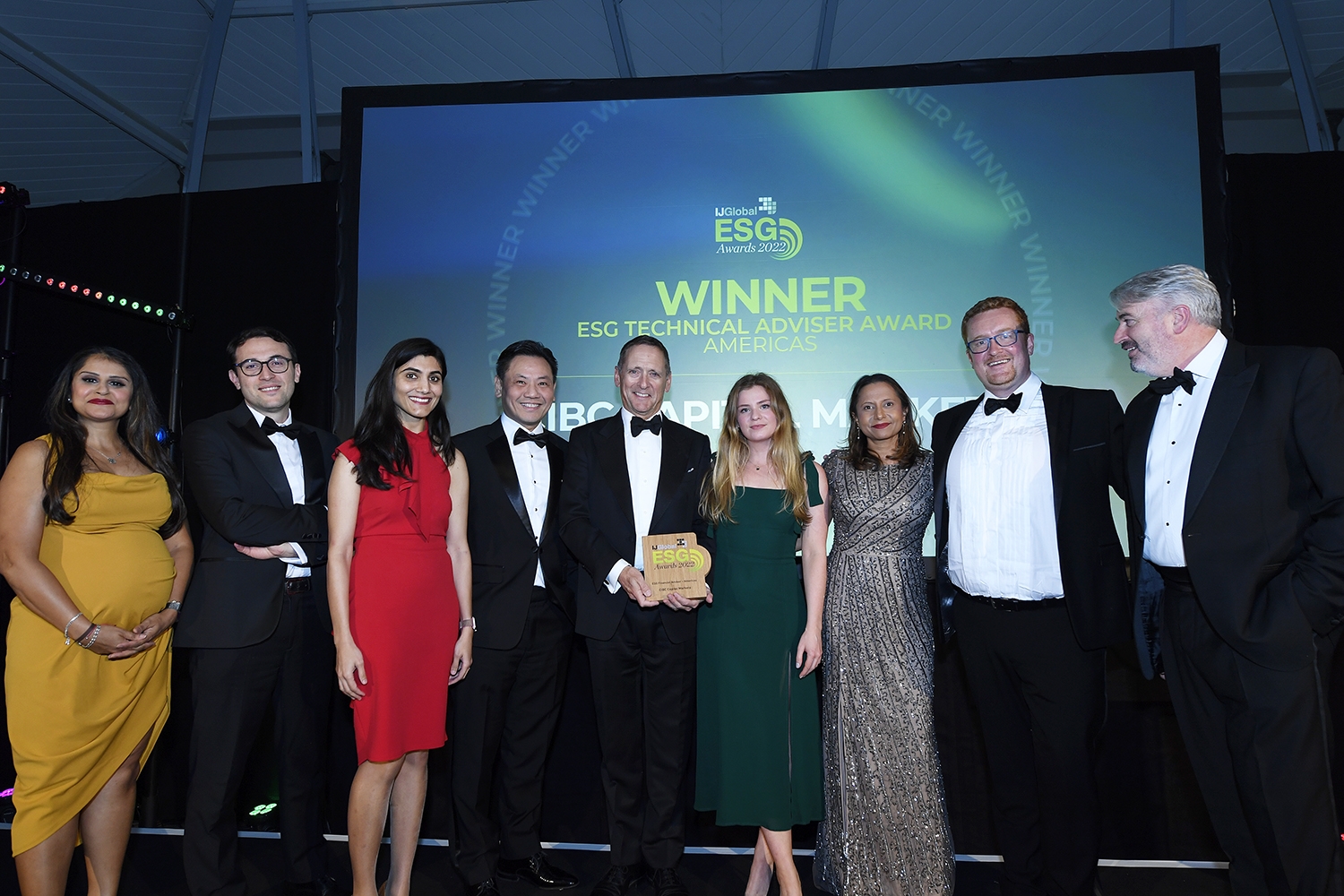IJGlobal ESG Awards 2022: CIBC and Hydrostor
Earlier in 2022, CIBC Capital Markets acted as co-financial adviser to Hydrostor, a Canadian long-duration energy storage provider, on a transformational $250 million preferred equity financing commitment, one of many high profile advisory mandates the bank executed across the year, supporting the strong case for its award as ESG Adviser of the Year in the Americas.
The equity investment, provided by Goldman Sachs Asset Management, will be used to support the development and construction of Hydrostor’s 1.1GW, 8.7GWh of Advanced Compressed Air Energy Storage (A-CAES) projects in Australia and California, as well as expand the company’s project development pipeline globally.
For CIBC, it was a standout of many advisory mandates in 2022, and one based on its expertise in energy storage and relationship with Hydrostor, which has been developing for several years, ever since Todd and VanWalleghem first met at an industry conference on new technologies
VanWallegham co-founded Hydrostor about 12 years ago, and after going through all the piloting needed to prove the technology solution, the next stage was scaling-up the plants, which required substantial investment. With this now in place, the ambition is to deploy the technology globally.
“Long duration storage is not necessarily a winner takes all market, but Hyrdrostor has a pretty compelling value proposition around low-cost, long-life, easy to site projects,” says VanWallegham.
“So we’re excited to get to where we are and potentially make a real impact on the global energy transition now that we’re scaling-up and broadly deploying the technology.”
Investment of the scale achieved will be crucial to realise Hydrostor’s global ambitions. But digging into this, what there the key objectives behind the capital raise?
“We had demonstrated the technology at a small scale. But we realised we had to be a developer,” says VanWallegham.
“As such, we needed to raise additional development capital to get the initial scale-up projects fully contracted and supported by enough seed construction capital to get them project financed and ultimately constructed. In parallel with this, we needed to build out our global pipeline of opportunities.”
He adds: “Our projects tend to be about a billion US dollars and require about $30 million in development capital. So we needed considerable funds and at a time when we are still pre-scale up and pre-revenue, which is a little bit unique. Securing the right type of ambitious investor to support us was therefore very important, and we were happy to pull that off with CIBC’s assistance.”
An ability to help shape the narrative around the investment proposition and curate the right type of potential investors takes industry expertise, knowledge and relationships, strengths which CIBC brought to bear on an emerging technology deal like this, which are never simple sells, says Todd.
“The bridge to commercialisation type story is not straightforward for any new technology and that's something that investors very much focused on here. Together with this, I think the route to market was also an important consideration.
"Investors very much look at the project level economics that these projects can potentially deliver, and ask key questions like what type of off-take can be credibly secured, and who would be the counterparty, and is that for all of the production or perhaps part of the production?”
Todd adds that these questions often lead into questions about the broader bankability of the project, including around the likelihood of obtaining project finance for such technology and on what financing terms.
So, to ensure success, what does it take?
“You need a broad engagement process,” explains Todd. “This is an area that's young and evolving quickly and therefore requires engaging with investors in different pockets. You also need to be creative on where those investors can come from. Whether that is the strategic universe, the financial universe, and also thinking beyond this capital raise, considering who could be potential partners to help accelerate the technology as well?”
In the end, Hydrostor landed on the right investor. “We needed someone with big ambitions that could cut a large cheque despite our early stage characteristics. We found the right fit, but we did canvas the universe in our hunt,” says VanWallegham.
Looking to the future, the growth opportunity in energy storage is compelling, supported by the expanding applicability of the technology.
“Where a lot of the discussions around energy storage currently focus on the shortage duration technologies with batteries of one hour or maybe two hours of storage, increasingly we're hearing clients talk about six, eight, even 12 hours of storage, and particularly in the context of large-scale green fuel projects, where you need at-scale power but on a very reliable and consistent basis.”
He adds: “That's where the likes of Hydrostor can play a really meaningful role. In sum, the future certainly will be much broader in terms of the applications than perhaps people think today.”
Request a Demo
Interested in IJGlobal? Request a demo to discuss a trial with a member of our team. Talk to the team to explore the value of our asset and transaction databases, our market-leading news, league tables and much more.
